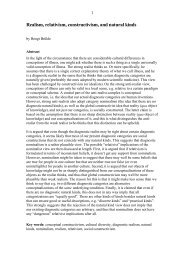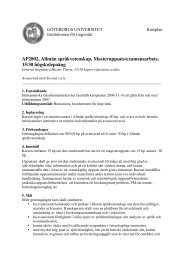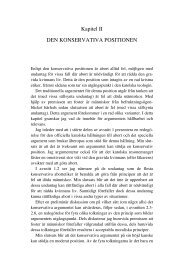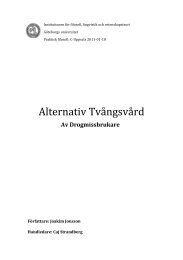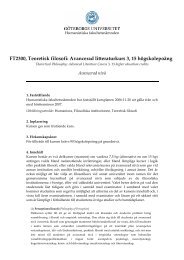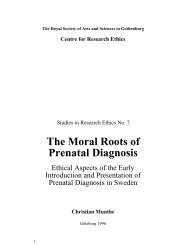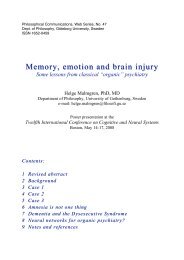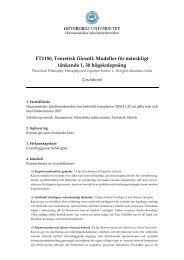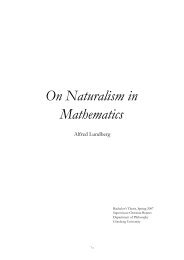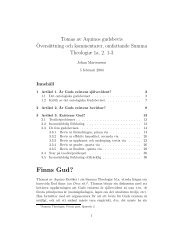Moral Relativism
Moral Relativism
Moral Relativism
- No tags were found...
You also want an ePaper? Increase the reach of your titles
YUMPU automatically turns print PDFs into web optimized ePapers that Google loves.
3Mainstream theories of logic and language are quite hostile to the possibility of nonobjectivityin the above-defined sense of a possibility of faultless disagreement. I haveargued elsewhere (2002, 2003) that the best way of making room for it is to relativise thetruth of propositions (at least truth as it is relevant to semantics and logic) to something Icalled “perspectives”. This relativisation goes beyond the relativisation involved inpossible world semantics, the main difference being that in the scheme I propose there isno analogue of the actual world, i.e. no uniquely privileged perspective. In thebackground of the semantics of relative truth is a wider conception of the relationshipbetween thought, language and the world, which offers an explanation of why somepropositions are objective others are not. In the next two sections I shall outline this widerconception.Conceptual rules and a priori knowledgeThe general conception in the background starts from the assumption that both thoughtand speech are social institutions. We frame thought in terms of public concepts, whichare governed by social norms. It is crucial that there are these social norms, to whichusers of public concepts subject themselves, because this makes it possible for people topool their cognitive resources. Because you and I both employ a common public conceptof a traffic jam, and because there is a language we both know in which one can expressthe concept of a traffic jam, I can tell you that there is a traffic jam on the M25 and youcan take advantage from receiving this information. There may well be exceptionaloccurrences of idiosyncratic thought, i.e. thought that is not framed in terms of publicconcepts, and perhaps conceptual progress and novelty depends on it. However, in largepart thought can be viewed as a social phenomenon. 1All the possible judgements within the repertoire of a competent thinker are subjectto a number of norms. Any judgement is potentially correct or incorrect, because theactivity of making judgements is constitutively governed by these norms. The process ofbecoming a competent thinker is the process of getting to know, and subjecting oneselfto, these constitutive norms. In large part (but only in large part), this happens inchildhood: an already competent thinker teaches a not-yet competent, or partiallycompetent, learner. Teachers teach by example as well as by explicit instruction andexplanation. Of course the only way in which teaching can take place is through themedium of a language: the process of learning how to judge and learning how to use alanguage are intimately interdependent and largely identical. For example, learning whatthe word “sleep” means will often coincide with learning the concept of sleep, its rules ofapplication. 2 Knowing these constitutive norms of a concept will enable one to employ1 This general approach is compatible with more individualistic conceptions of thought and language: it ispossible to describe the same thinker in two different ways: as a thinker with his own unique system ofthought and with his own unique idiolect, or as a thinker whose individual thought-processes participate ina communal system of thought and a communal language. However the approach that stresses the socialaspects of thought might make it easier to explain certain social phenomena of thought and communication.In the current context this will be an advantage.2 Of course it is not impossible to master a concept without mastering any word that expresses that concept,but if the concept is a public one, then mastering it will typically involve learning to express it in a publiclanguage.



